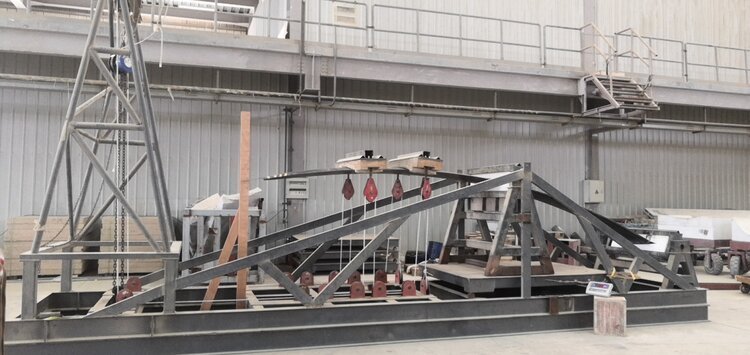How We Do: Daggerboards
“HOW WE DO…”
A NEW TECHNICAL SERIES IN WHICH HH CATAMARANS CHIEF OF OPERATIONS PAUL HAKES WILL TALK ABOUT DIFFERENT DESIGN AND BUILD ELEMENTS THAT MAKE AN HH SO VERY SPECIAL. IN THIS ISSUE PAUL DISCUSSES DAGGERBOARDS:
How strong is an HH daggerboard?
Daggerboards add performance to a catamaran. In doing so they are subject to incredible side forces to stop the boat slipping to leeward and providing lift. A straight daggerboard not only stops leeward slippage but also provides lift to windward because the water flowing over the board has a high pressure and low pressure side, much like an airplane wing. This, in turn, allows you to sail at a higher upwind angle. In the case of a curved daggerboard not only do we get windward lift, we also get upwards lift which effectively reduces the displacement of the boat. The result yet again is higher performance, and the faster the boat moves through the water the greater the lift. In the case of the HH66, with standard curved boards at 20 knots, which is commonly achieved in 20 knots of wind, the upward lift is around 15-20% of the boat’s displacement. That’s approaching 3,600kg of upward lift! Sailing at this speed we could well be flying a hull, and so the entire righting moment of the boat is now leaning against the leeward board. Again, on an HH66 at this speed that’s over 5,000kg. When you start reefing the mainsail the center of effort in the sail plan is lowered, therefore the amount of side force necessary to fly a hull is even greater. In fact now the daggerboard loads are getting scary, but hopefully the ride is still fun!
Owners of nearly all makes of catamarans are asked to start lifting the leeward daggerboard when reefing or hull flying, it is part of your Owner’s Manual, because they break otherwise. Not with HH Catamarans, these are full grown catamarans designed to deliver the performance you are seeking whatever the conditions (within reason). So not only is your HH66 daggerboard hanging 3.5m below the water, it can safely handle hull flying loads with two reefs in the mainsail. This is the standard set for the HH55 and the HH50 too. Our engineers and any competent Naval Architect can calculate the righting moment to ‘hull fly’, and therefore can determine the load on the daggerboard, same for Reef 1 and Reef 2. Furthermore it often times gets wavy in the sea, and at these speeds our catamarans can start leaping off the waves. This motion creates ‘dynamic loads’ on the boards (boat and rig too). Engineers are hard pushed to understand and predict dynamic loads, so they typically take a known full working load and double it to allow for the ‘dynamic load’. As we do not want our board to break with dynamic loads, even with a 2x safety factor over maximum known working load, we then double the load again to determine the breaking load. For our HH66 the result is a board that has a full working load flying a hull with two reefs at 8,500kg, and a breaking load of 34tons! We apply the same standards to the 55 and 50 sister ships.
You may ask, how can we be so sure? We test. Every single HH Catamaran daggerboard goes into our monster testing jig and we apply the full force of the known working load to fly a hull with two reefs and the two times “dynamic load factor”. So, an HH66 board gets tested to a staggering 17,000kg, which is really scary. Even with our new HH50, the boards are tested all the way to 10 tons. As the load is applied, we can also measure the deflection to ensure this too matches design.


